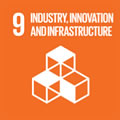Por favor, use este identificador para citar o enlazar a este item:
http://hdl.handle.net/10261/342089COMPARTIR / EXPORTAR:
 SHARE SHARE
 CORE
BASE CORE
BASE
|
|
| Visualizar otros formatos: MARC | Dublin Core | RDF | ORE | MODS | METS | DIDL | DATACITE | |

| Título: | Modelling and assessment of a sorption enhanced gasification system coupled with hydrothermal carbonization, hot gas cleaning, and plasma to produce pure H2 from biomass |
Autor: | Marcantonio, Vera; De Falco, Marcello; Capocelli, Mauro; Amado-Fierro, Álvaro CSIC ORCID; Álvarez Centeno, Teresa CSIC ORCID ; Bocci, Enrico | Palabras clave: | Sorption enhance gasification Aspen plus Biomass gasification Hot gas cleaning Hydrogen Hydrothermal carbonization |
Fecha de publicación: | 5-oct-2023 | Editor: | Elsevier | Citación: | International Journal of Hydrogen Energy 48(84): 32672-32685 (2023) | Resumen: | Concerns about energy security, energy prices and climate change led scientific research towards sustainable solutions to fossil fuel as renewable energy sources coupled to hydrogen as energy vector and carbon capture and conversion technologies. Among the technologies investigated in the last decades, biomass gasification acquired great interest owing to the possibility to obtain low cost and CO2 negative emission hydrogen production from a large variety of everywhere available organic wastes. Upstream and downstream treatment were then studied in order to maximize hydrogen yield, reduce the content of organic and inorganic contaminants under the admissible levels for the technologies which are coupled with, capture, and convert carbon dioxide. However, studies which analyse a whole process made of all those technologies is still missing. In order to fill this lack, the present paper investigated the coexistence of Hydrothermal Carbonization (HTC), Sorption Enhance Gasification (SEG), Hot Gas Cleaning (HGC), and CO2 conversion by Dielectric Barrier Discharge (DBD) plasma reactor for H2 production from biomass waste by means of Aspen Plus software. The proposed model aimed to identify and optimise the performance of the plant by varying operating parameters (such as temperature, CaO/biomass ratio, separation efficiency, etc.). The carbon footprint of the global plant is 2.3 kg CO2/kg H2, lower than the latest limit value imposed by the European Commission to consider hydrogen as “clean”, that was set to 3 kg CO2/kg H2. The hydrogen yield referred to the whole plant is 250 gH2/kgBIOMASS. | Versión del editor: | https://doi.org/10.1016/j.ijhydene.2023.03.075 | URI: | http://hdl.handle.net/10261/342089 | DOI: | 10.1016/j.ijhydene.2023.03.075 | ISSN: | 0360-3199 |
| Aparece en las colecciones: | (INCAR) Artículos |
Ficheros en este ítem:
| Fichero | Descripción | Tamaño | Formato | |
|---|---|---|---|---|
| Modelling and assessment_Marcantonio.pdf | 939,67 kB | Adobe PDF |  Visualizar/Abrir |
CORE Recommender
SCOPUSTM
Citations
3
checked on 24-abr-2024
WEB OF SCIENCETM
Citations
2
checked on 24-feb-2024
Page view(s)
8
checked on 04-may-2024
Download(s)
3
checked on 04-may-2024
Google ScholarTM
Check
Altmetric
Altmetric
Este item está licenciado bajo una Licencia Creative Commons



